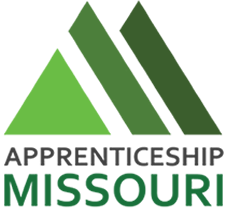Apprenticeship Missouri for Providers
 Apprentices receive technical and academic instruction that applies to the job, and can be provided by a college or university, a technical school, an apprenticeship training school — or by the business itself. It can be provided at the school, online, or at the job site.
Apprentices receive technical and academic instruction that applies to the job, and can be provided by a college or university, a technical school, an apprenticeship training school — or by the business itself. It can be provided at the school, online, or at the job site.
Benefits for Providers
- Connect with industry partners
- Develop consortiums
- Create stackable credentials
- Support dual credit and award credit for apprenticeship experience
- Design career pathways
- Increase enrollment
- Strengthen business relationships
Getting Started
- Contact Apprenticeship Missouri at apprenticeship@dhewd.mo.gov to explore apprenticeship as a training option.
- Identify the needs of local industry through labor market information and assessment of employer demand.
- Partner to meet the needs of industry demand.
- Target a talent pipeline for development.
- Identify and plan for apprentice supportive services.
- Engage employer(s) that will utilize apprenticeship and determine training needs.
- Contact the USDOL/OA for assistance in the development of the Standards of Apprenticeship.
- Develop apprenticeship standards that meet the needs of employer(s).
- Identify key roles and responsibilities for the apprenticeship.
- Determine the process of program operation, work processes, related technical instruction, and progressive wage schedule.
- Market the apprenticeship pathway to talent pipeline audiences and stakeholders.
- Develop and implement recruitment and outreach strategy.
- Assist with the enrollment of apprentices hired by employer.
- Registered Youth Apprentices will need essential skills training such as interview skills and effective communication.
- Registered Youth Apprentices may utilize optional job shadowing prior to the apprenticeship program.
- Registered Youth Apprentices will need a work permit.
- Fulfill the roles and responsibilities as identified in the Standards of Apprenticeship.
 Missouri Department of Higher Education and Workforce Development
Missouri Department of Higher Education and Workforce Development
